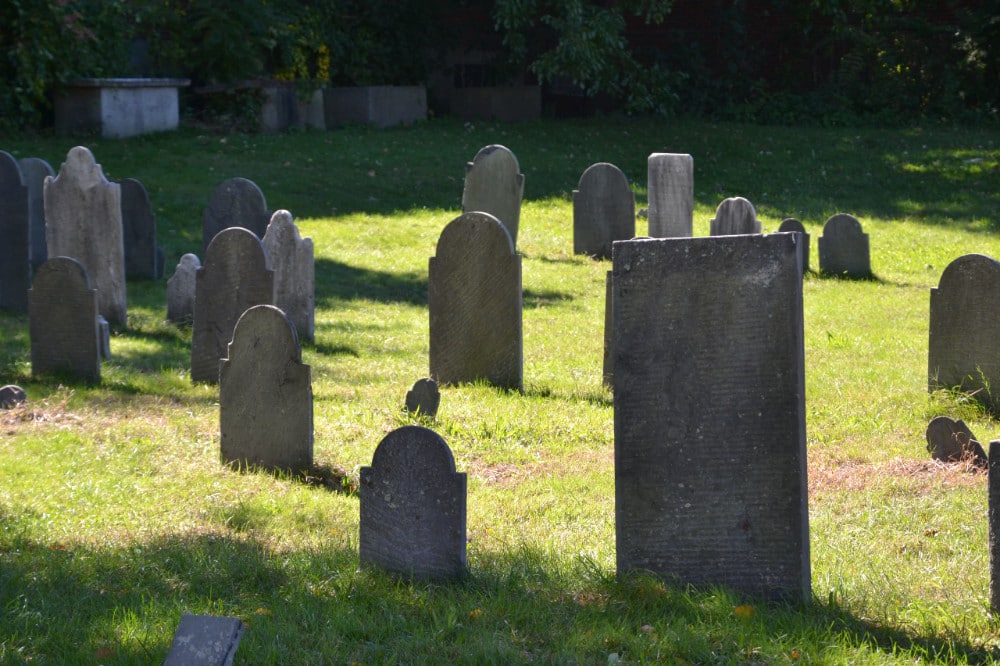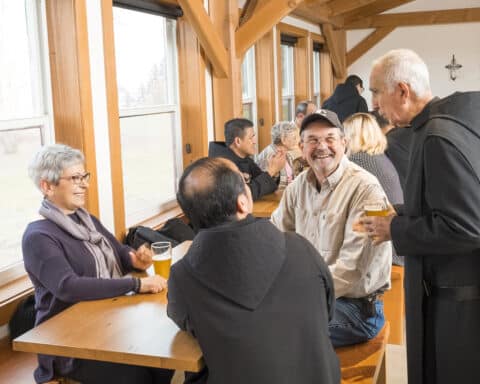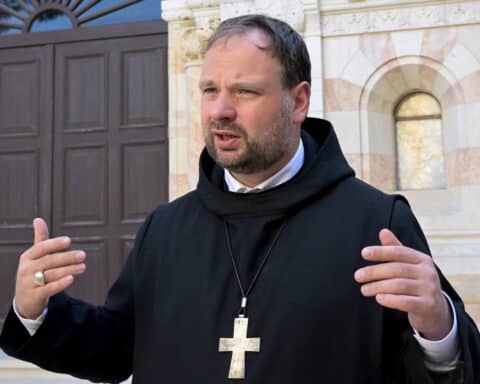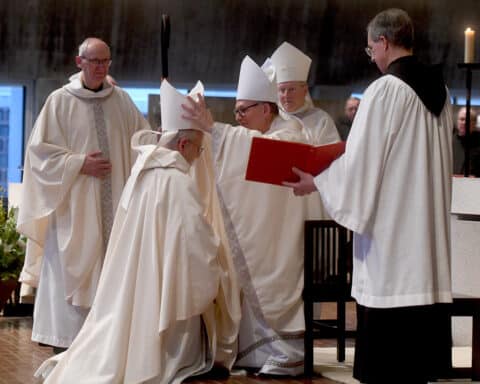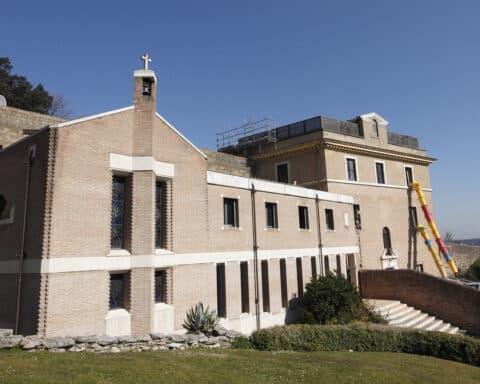Have you ever imagined having a graveyard in your backyard? Something like this is typically done at Benedictine monasteries. That is, we often bury our deceased members on the grounds of the monastery, not far from the building in which we live.
This is not done in some morbid spirit. Rather, it serves some good purposes. For one, with the cemetery on the monastery property, the monks see it regularly and are thus reminded to pray for their deceased brothers regularly. Also, when the monks see the cemetery, they are reminded of their own deaths. After all, that is where their own bodies will eventually end up. This reminder is in keeping with what St. Benedict tells his monks in his Rule: “Daily hold up death before your eyes.” Our earthly lives will not continue forever. They will end, and we will go before the judgement seat of God. Mindful of this, let us now be earnest about the work of following Jesus. Let us do now what will benefit us for eternity, as St. Benedict says.
Having the cemetery on the monastery’s property also fosters a communion with the monks that have gone before us. In a way, those monks who have died are still my confreres. And we are still sharing spiritual goods. If they are in heaven, they are praying for me. If they are in purgatory, my prayers help them. Moreover, in praying for them, I am practicing the Second Commandment to love my neighbor as myself. After all, I want others to pray for my repose after I die! Charity is still to be exercised between the living and deceased members of the monastery.
Perhaps this sense of being in communion with deceased members is why Benedictine monks were instrumental in developing All Souls’ Day. Within a century after St. Benedict wrote his Rule for Monasteries and founded the Benedictines in the sixth century, Benedictine monasteries were holding commemorations for their deceased members. Different dates were used over the years, but eventually, around the year 1000, the abbot of the Benedictine monastery of Cluny, St. Odilo, decided to have the commemoration on Nov. 2, after the celebration of All Saints on Nov. 1. That practice spread to other monasteries and then throughout the Latin rite of the Catholic Church.
In turn, November as a whole has become a month for Catholics to remember and pray for their deceased loved ones. There is the custom of visiting the tombs of these loved ones and having Masses said for them. At my monastery, we have the custom of going as a group to our monastery’s cemetery one morning early in November. As the abbot, I lead the assembled monks in a prayer service for all the deceased monks. After an opening prayer and a Scripture reading, I walk around the cemetery, blessing the graves with holy water and then incensing the graves. Meanwhile, a few monks chant the names of all the deceased monks and the rest voice their prayers for the deceased. As one gets older and has spent more years in the monastery, one comes to remember from personal experience more of the deceased monks who are named!
The Second Book of Maccabees says that when Judas Maccabeus offered sacrifices for his deceased soldiers, “he acted in a very excellent and noble way, inasmuch as he had the resurrection in mind” (2 Mac 12:43). In commemorating the dead, we keep the Resurrection in mind. In our communion with deceased confreres and loved ones, we are hoping to go “all together to everlasting life” (Rule of St. Benedict, 72:12). And we await the day when the graves are opened and cemeteries are emptied, and our bodies are united to our souls. Then, we will be fully alive, body and soul, in the presence of the risen Lord. Death will be no more.
Abbot Austin Murphy, OSB, is the abbot of St. Procopius Abbey in Lisle, Illinois.

